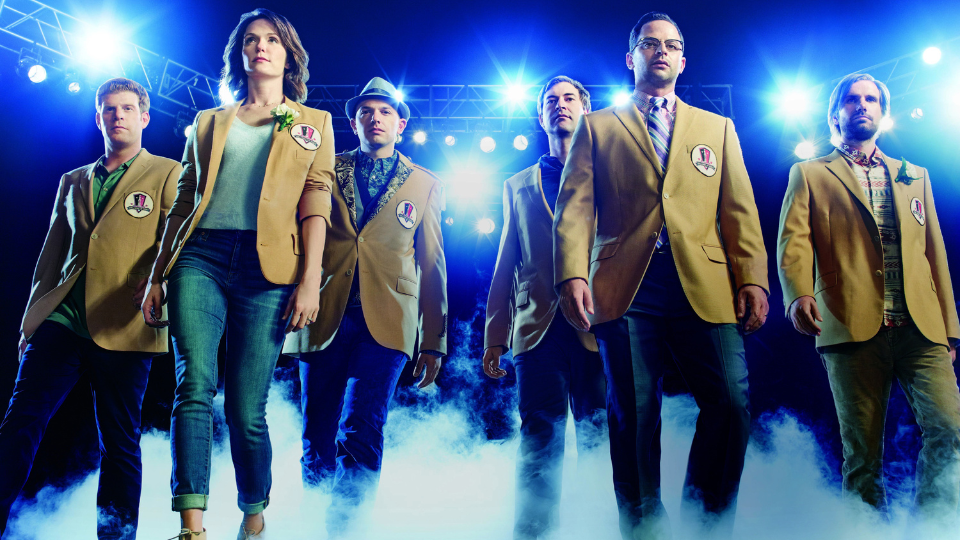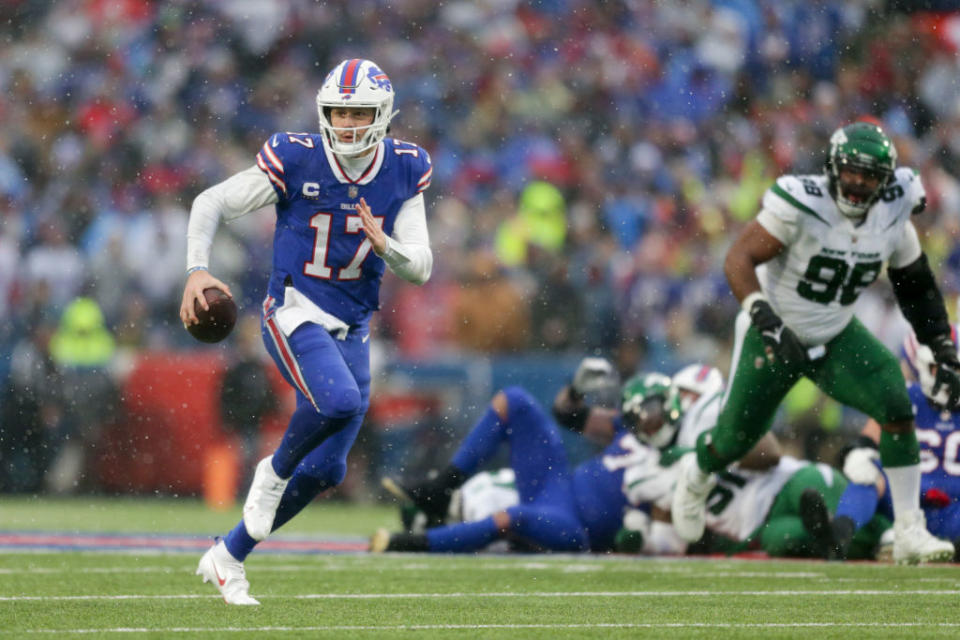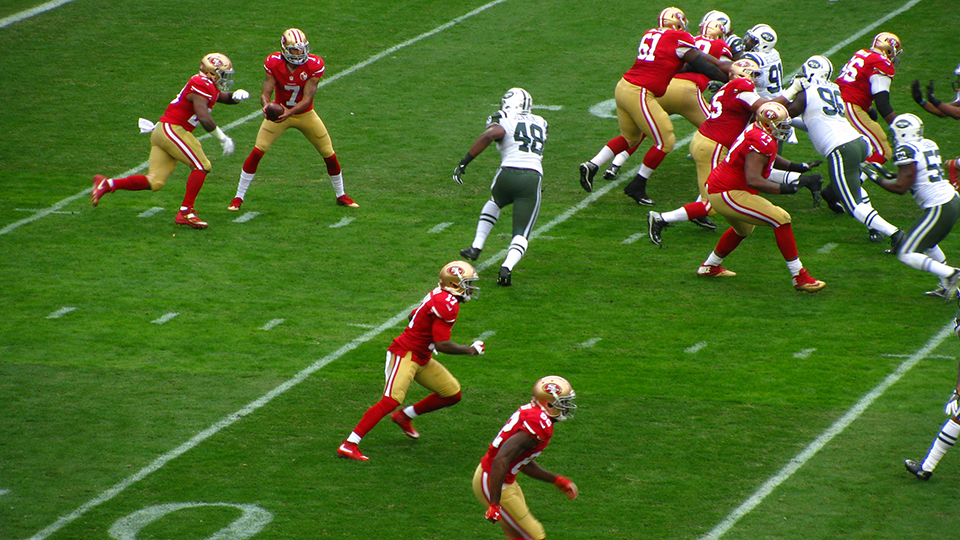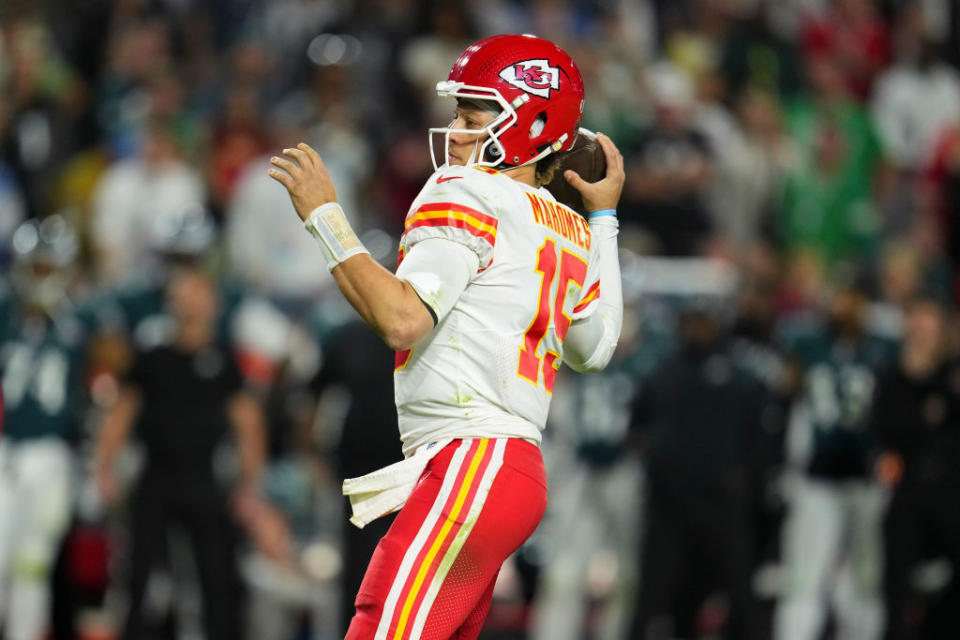A Newbie’s Guide To Fantasy Football—All The Questions You’re Too Afraid To Ask


It’s nearly September and that means one thing: football season is back and if you’ve received an invite from a friend but don’t know how to play fantasy football, consider this your beginner’s guide.
More from StyleCaster
Get Tickets to Aaron Rodgers' 1st Game With the NY Jets Cheaper Than Face Value
Joe Burrow's Engagement to His Biggest 'Fangirl' Might've Leaked
Thursday Night Football Is Back-How To Catch The Colts v Eagles Preseason Clash
The National Foot Ball League, a.k.a. the NFL, started in 1920 and consists of 32 teams divided between two main conferences: the National Football Conference (NFC) and the American Football Conference (AFC). These days, the NFL’s regular season runs for 18 weeks from early September to early January, with each team playing 17 games and having one bye week.
After the regular season ends, seven teams from each conference advance to the playoffs, which culminate in the Super Bowl, held on the first Sunday in February. Since the creation of the Super Bowl, which is played between champions of the NFC and AFC, the Pittsburgh Steelers and the New England Patriots hold the title for the most championship titles at six each.
Click here to read the full article.
Fantasy football is a popular online game where people create virtual teams made up of real NFL players. These virtual teams compete against each other based on the actual performances of the players in real NFL games. Participants in fantasy football leagues draft players onto their teams, manage their rosters, and make strategic decisions to accumulate points and ultimately win matchups against other participants.
According to Britannica.com, “fantasy football emerged in 1962 when Bill Winkenbach, then part owner of the Oakland Raiders football team, gathered with some friends in a New York City hotel, and together they created the first fantasy football league, which was dubbed the GOPPPL (Greater Oakland Professional Pigskin Prognosticators League).”
So without further ado, here’s what you need to know about how to play fantasy football.
How to play fantasy football
Here are the basic rules.
How drafting works
Before the NFL season starts, league members participate in a draft. In a standard fantasy football draft, each participant takes turns selecting players for their team from a pool of available NFL players. Each player can only be picked once.
Draft order can be determined randomly or based on various methods like the inverse order of the previous season’s standings. Some leagues determine draft order by things like horse races or something else that is left up to chance for total unbiased draft orders.
How roster management works

Each fantasy team has a roster with various positions, such as quarterbacks, running backs, wide receivers, tight ends, kickers, and defenses. The number of players per position can vary based on league rules. Managers need to decide which players to start (in their “starting lineup”) and which to place on the bench each week.
How scoring works
Players earn points based on their performance in real NFL games. For example, a quarterback might earn points for passing yards and touchdowns, while a running back earns points for rushing yards, receiving yards, and touchdowns. Kickers and defenses also earn points for specific achievements like field goals and interceptions, respectively.
There are different ways to log points depending on your league. For example, you can opt for a full or half-point PPR, which stands for Points Per Reception. This scoring model means that players will also get a half or pull point for every catch in addition to their yardage gained.
How matchups work
Fantasy teams compete against each other in weekly matchups. The points accumulated by the players in a manager’s starting lineup contribute to their total score for the week. The team with the higher total score wins the matchup and that will determine their standings.
How waiver wire and trades work

Throughout the season, managers can make changes to their rosters by adding (via waivers) or dropping players. Some leagues also allow trades between teams, where managers can exchange players with each other.
There are different ways to organize waiver wires, too. The Free Agent Budget (FAB) is a popular method used in many leagues to manage waivers. FAB is a virtual currency allocated to each team at the beginning of the season, and managers use this currency to bid on players they want to pick up from the waiver wire.
The FAB system allows managers to strategize and manage their budgets throughout the season. Some managers might be more aggressive early in the season to secure breakout players, while others might save their budget for potential late-season pickups or emergencies.
What does ADP mean?
ADP represents the Average Draft Position for players in fantasy football drafts, i.e. which order players are picked. This can help you be strategic in putting your team together, but sometimes there are some gems a bit further down the list! It shouldn’t be taken as gospel.
How playoffs and championships work

Most fantasy football leagues have a regular season followed by playoffs. The teams with the best records or point totals advance to the playoffs, culminating in a championship game. The winner of the championship game is typically the winner of the fantasy football league.
Fantasy football is not only about strategy but also about following NFL games closely, monitoring player injuries, and making informed decisions to maximize your team’s performance. It’s a great way to engage with the NFL season on a deeper level and enjoy friendly competition with friends, family, or other fantasy enthusiasts.
Who should I draft in fantasy football?
It’s very difficult to say who you should draft first because every draft is different. It’s usually not advised to take a Quarterback, Kicker, or Defense first—other than that, take note of the pattern happening in your draft and use that to inform your picks.
If you’re in the fourth draft position, for example, and the first three drafters take Running Backs, you might want to think about drafting a top Wide Receiver, and vice versa.
What does PPR mean?
PPR stands for Points Per Reception and is a scoring method for fantasy football, you can have half or full PPR leagues depending on your preferences. It means that any player who catches a ball from their quarterback gets a point (or half a point) in addition to any yardage they gain.
What’s the benefit? PPR leagues are generally better for leagues with 12-16 players because they provide more depth of draftable players.
What is a dynasty league?
A dynasty/keeper league is a league where, unlike regular fantasy football leagues, drafted players are held onto throughout several seasons instead of one, meaning you can get the real experience of managing a team through injuries and playoffs—all the ups and downs.
A dynasty league is where all or most players carry through several seasons, while a keeper league involves only a few players being retained. Theoretically, dynasty or keeper leagues can go on indefinitely, until players retire.
What does IR mean?
IR stands for Injured Reserve, meaning they have been injured severely enough that their return to the current season is uncertain. Depending on what happened to your player and how highly you drafted them, you can bench them in the hope that they return, or drop them and pick up someone else.
What does PUP mean?
PUP means Physically Unable to Perform. It’s a roster designation used in the NFL for players who suffered injuries during football-related activities prior to the start of training camp. If a player is placed on the PUP entering the season, they’re required to sit out for a minimum of six weeks. Once those six weeks are up, teams have an extra five weeks where they can decide whether or not to allow the player to begin practicing.
Our mission at STYLECASTER is to bring style to the people, and we only feature products we think you’ll love as much as we do. Please note that if you purchase something by clicking on a link within this story, we may receive a small commission from the sale.
Best of StyleCaster

